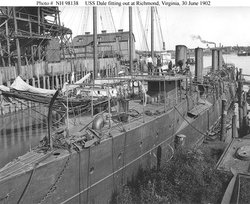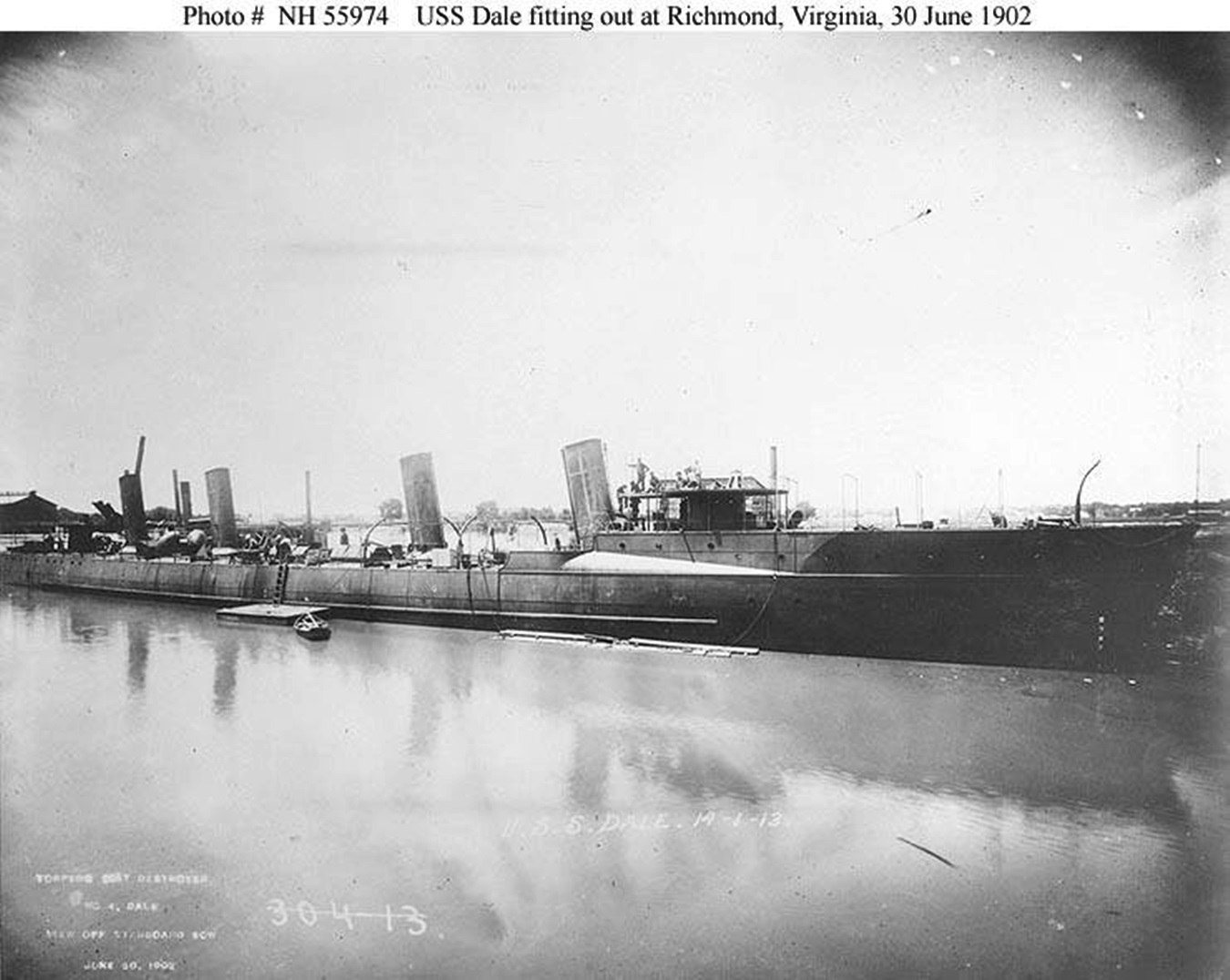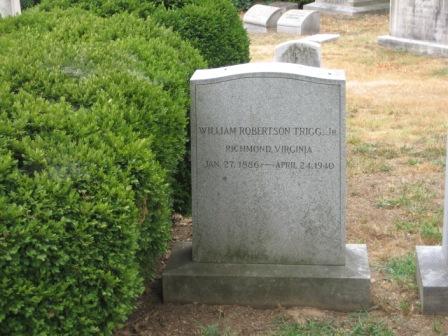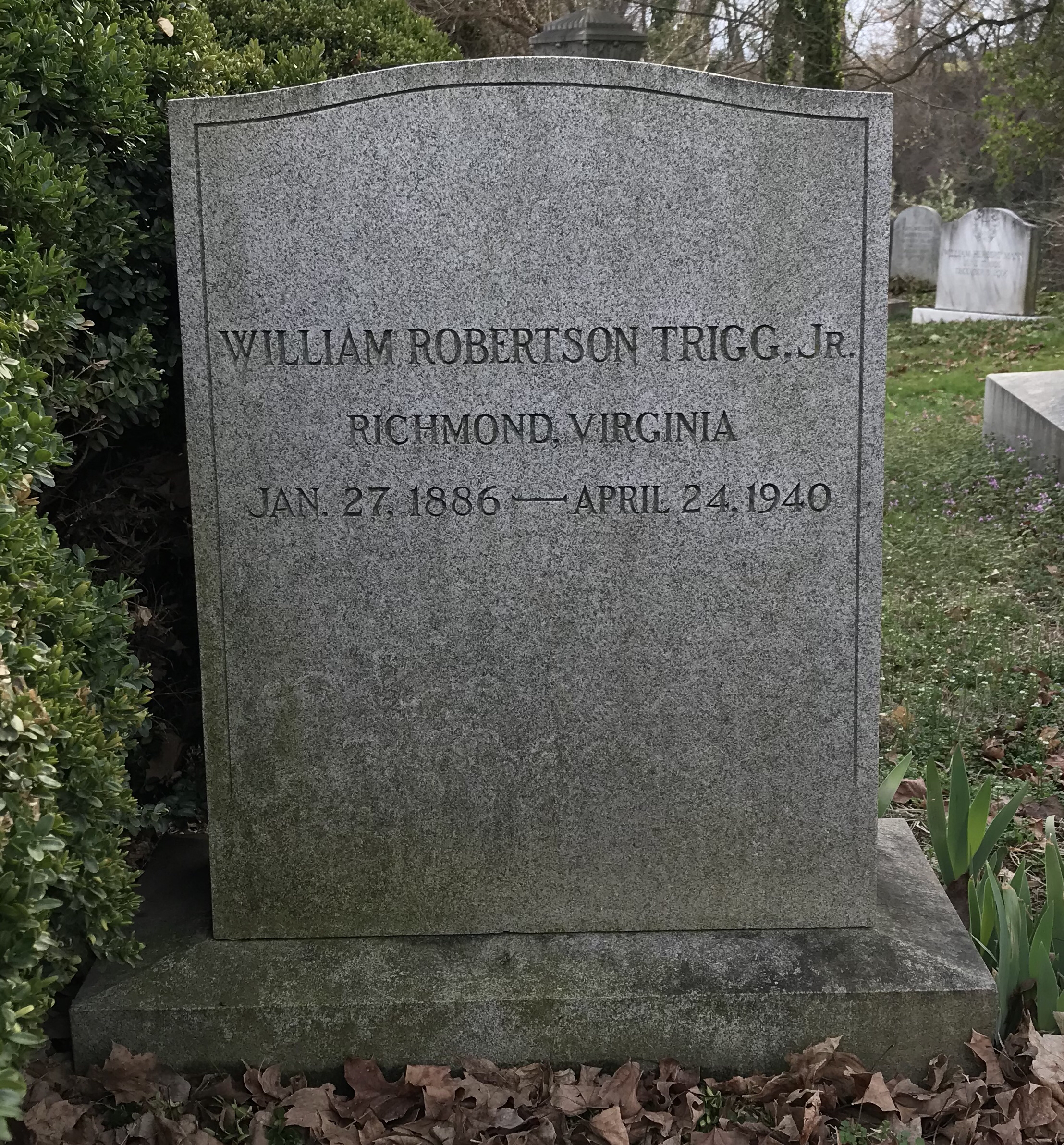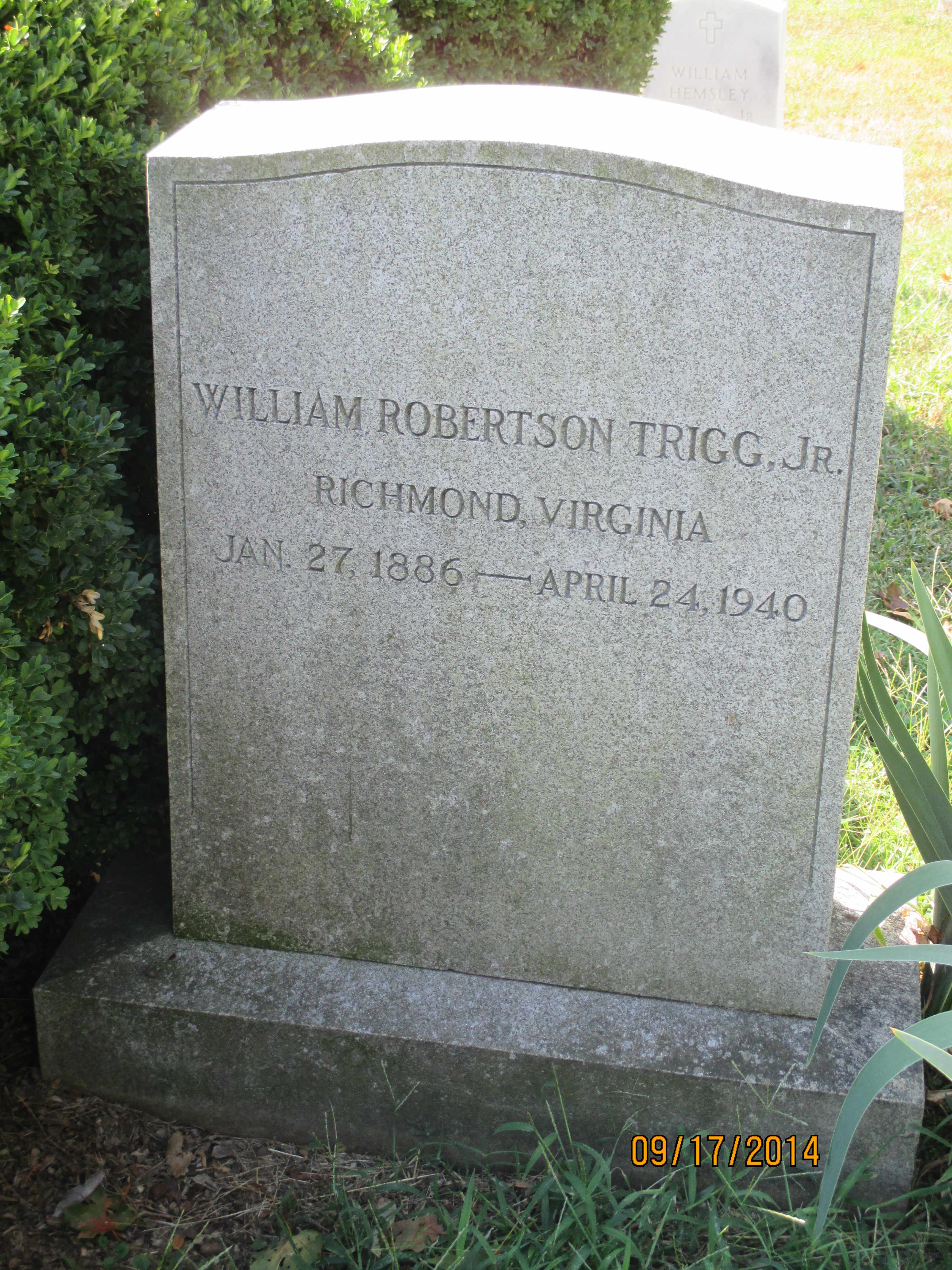He conceived and worked out the idea of developing the Tamner and Delany Engine Company into the Richmond Locomotive Works. He soon had Richmond-built locomotives known all over the world.
Then he organized the company bearing his name and started the Triggs Shipyards, where a dozen Government vessels had been built. These two enterprises were among the largest in the city.
It is only towards the end of the 19th Century that the building of ships became an important industry in the Southern States. No part of the Union was endowed by nature with a greater variety of the finest timber than these States; and the failure during the existence of the slave system to turn the presence of this timber to the fullest account in the highest branches of shipbuilding was of a piece with the partial failure to use the numerous other resources of the South for the purposes of general manufacture. The great shipyard at Newport News, Virginia, was not only one of the largest in the United States, but also one of the largest in the world. Another shipyard of importance is the one belonging to the Maryland Steel Company. This plant, which represented a large outlay of capital, and was thoroughly equipped with all the most highly improved appliances, was situated in the city of Baltimore.
A third shipyard was the one belonging to the Wm. R. Trigg Company, situated at Richmond, Virginia. Both of these latter yards, like the one at Newport News, were erected in the course of the last years of the 19th Century. The water power supplied by the falls in James River at Richmond was turned to account in the creation of electric force for use in the different local factories. In 1902, one vessel only was launched in the Richmond yard; its tonnage did not exceed 635. The Richmond shipyard is especially equipped for building torpedo boats and destroyers.
Although side launching on the Lakes was not an uncommon practice, the side launches the launching of torpedo-boats Shubrick, Stockton, and Thornton, and of torpedo-boat destroyers Dale and Decatur, all of which were built by the William R. Trigg Company, at Richmond, Va. were different in some respects. These vessels were not launched sideways from choice; on the contrary, the limited extent of land and water available at the time these vessels were laid down left the Trigg Company no alternative. The land at their disposal was a wedge-shaped piece of ground, bounded on two sides by the old James river and Kanawha canal and by the dock at the head of the same, and on the third side by the tracks of the Chesapeake and Ohio Railroad and of the Southern Railway. The canal is about 100 feet wide, and is normally about 15 feet deep, although this was increased by flooding during the launches to about 18 feet. The Shubrick's building slip occupied the apex of the wedge, and the Stockton and Thornton, and Dale and Decatur, were built in pairs in the order named. The vessels were launched in the order in which they have been mentioned The Shubrick, Stockton, and Thornton were sister vessels, as were the Dale and Decatur. In general the methods used for the two classes, torpedo-boats and destroyers, were the same, with certain necessary variations.
The William R. Trigg Company, a corporation organized under the laws of the state of Virginia, carrying on business at Richmond, Virginia, had contracts for the construction of certain vessels for the United States, namely, a sea-going suction dredge, called the Benyuard, for the War Department; a revenue cutter, called the Mohawk, for the Treasury Department; and a cruiser, for the Navy Department, called the Galveston. The contract price for the Benyuard, apart from its pumping machinery, was $254,550; for the Mohawk, $217,000; and for the Galveston, $1,027,000. These contracts were dated, for the Benyuard, September 9, 1901 ; for the Mohawk, April 20, 1900; and for the Galveston, December 14, 1899.
In December 1902, S.H. Hawes Company filed a bill in the chancery court at the city of Richmond, on behalf of themselves and other creditors, asserting liens under the supply lien law of the state of Virginia, averring the insolvency of the Trigg Company, and asking for the appointment of a receiver, which was accordingly made. The receiver took possession of the property of the Trigg Company, including the vessels above named. Under §§ 3753 and 3754 of the Revised Statutes of the United States (U. S. Comp. Stat. 1901, p. 2530) a stipulation was executed by the United States district attorney, on behalf of the United States, for the release and discharge of the vessels, and the material on hand applicable thereto.
William R. Trigg, founder of the Richmond Locomotive Works and the Trigg shipyards, died February 16, 1903. He had been stricken with paralysis nearly two years earlier, and had not been well since. He was fifty-four vears old.
On May 14, 1903 Acting Secretary of the Navy Darling ordered that the contract with the Trigg Shipbuilding Company of Richmond, Va., for the building of the cruiser Galveston be revoked. The Galveston was to be towed to the Norfolk Navy Yard for completion. This action had been contemplated for some time because of the financial embarrassment of the Trigs Company, which was in the hands of a receiver. Several weeks earlier the department informed Trigg that unless work was commenced on the Galveston at once the vessel would be taken charge of by the Government. No work had been done on the Galveston since the Winter of 1902, and she lay at the Trigg yard 66 percent completed. It was possible further work will be necessary before she can be launched. A board of officers was appointed to carry into effect Secretary Darling's order.
In the progress of litigation it has been finally decided by the Supreme Court that the Benyuard belonged to the United States, and that it was not liable for the debts of the appellee. All controversy as to this vessel was therefore at an end, and It Is no longer Involved In this suit. It has also been finally settled by this court in Hawes 4 Co. v. Trigg Co., supra, and affirmed by the Supreme Court in United States v. Ansonia Brass & Copper Co., supra, that, as between the United States and the supply lien creditors of the Win. R. Trigg Company, the latter had priority of lien upon the Mohawk and the Galveston. Since the final settlement of that question, the supply lien creditors have all been satisfied.
The next controversy involved the right of the United States to preference over the general creditors of the Wm. R. Trlgg Company In favor of certain contractual liens held by them against the Mohawk and the Galveston. These two vessels were built by the Trlgg Company under contracts with the United States, which provided for a lien upon each vessel in favor of the government for all moneys advanced by It on account thereof during the progress of the work. At the time of the appointment of the receiver, these vessels were In course of construction, and the government had made large payments upon each, and It Is for the satisfaction of these contractual liens that the appellants now insist that they are entitled to priority over the claims of the general creditors of the William R. Trlgg Company. The existence of these contractual liens in favor of the government has been recognized throughout this litigation.
He conceived and worked out the idea of developing the Tamner and Delany Engine Company into the Richmond Locomotive Works. He soon had Richmond-built locomotives known all over the world.
Then he organized the company bearing his name and started the Triggs Shipyards, where a dozen Government vessels had been built. These two enterprises were among the largest in the city.
It is only towards the end of the 19th Century that the building of ships became an important industry in the Southern States. No part of the Union was endowed by nature with a greater variety of the finest timber than these States; and the failure during the existence of the slave system to turn the presence of this timber to the fullest account in the highest branches of shipbuilding was of a piece with the partial failure to use the numerous other resources of the South for the purposes of general manufacture. The great shipyard at Newport News, Virginia, was not only one of the largest in the United States, but also one of the largest in the world. Another shipyard of importance is the one belonging to the Maryland Steel Company. This plant, which represented a large outlay of capital, and was thoroughly equipped with all the most highly improved appliances, was situated in the city of Baltimore.
A third shipyard was the one belonging to the Wm. R. Trigg Company, situated at Richmond, Virginia. Both of these latter yards, like the one at Newport News, were erected in the course of the last years of the 19th Century. The water power supplied by the falls in James River at Richmond was turned to account in the creation of electric force for use in the different local factories. In 1902, one vessel only was launched in the Richmond yard; its tonnage did not exceed 635. The Richmond shipyard is especially equipped for building torpedo boats and destroyers.
Although side launching on the Lakes was not an uncommon practice, the side launches the launching of torpedo-boats Shubrick, Stockton, and Thornton, and of torpedo-boat destroyers Dale and Decatur, all of which were built by the William R. Trigg Company, at Richmond, Va. were different in some respects. These vessels were not launched sideways from choice; on the contrary, the limited extent of land and water available at the time these vessels were laid down left the Trigg Company no alternative. The land at their disposal was a wedge-shaped piece of ground, bounded on two sides by the old James river and Kanawha canal and by the dock at the head of the same, and on the third side by the tracks of the Chesapeake and Ohio Railroad and of the Southern Railway. The canal is about 100 feet wide, and is normally about 15 feet deep, although this was increased by flooding during the launches to about 18 feet. The Shubrick's building slip occupied the apex of the wedge, and the Stockton and Thornton, and Dale and Decatur, were built in pairs in the order named. The vessels were launched in the order in which they have been mentioned The Shubrick, Stockton, and Thornton were sister vessels, as were the Dale and Decatur. In general the methods used for the two classes, torpedo-boats and destroyers, were the same, with certain necessary variations.
The William R. Trigg Company, a corporation organized under the laws of the state of Virginia, carrying on business at Richmond, Virginia, had contracts for the construction of certain vessels for the United States, namely, a sea-going suction dredge, called the Benyuard, for the War Department; a revenue cutter, called the Mohawk, for the Treasury Department; and a cruiser, for the Navy Department, called the Galveston. The contract price for the Benyuard, apart from its pumping machinery, was $254,550; for the Mohawk, $217,000; and for the Galveston, $1,027,000. These contracts were dated, for the Benyuard, September 9, 1901 ; for the Mohawk, April 20, 1900; and for the Galveston, December 14, 1899.
In December 1902, S.H. Hawes Company filed a bill in the chancery court at the city of Richmond, on behalf of themselves and other creditors, asserting liens under the supply lien law of the state of Virginia, averring the insolvency of the Trigg Company, and asking for the appointment of a receiver, which was accordingly made. The receiver took possession of the property of the Trigg Company, including the vessels above named. Under §§ 3753 and 3754 of the Revised Statutes of the United States (U. S. Comp. Stat. 1901, p. 2530) a stipulation was executed by the United States district attorney, on behalf of the United States, for the release and discharge of the vessels, and the material on hand applicable thereto.
William R. Trigg, founder of the Richmond Locomotive Works and the Trigg shipyards, died February 16, 1903. He had been stricken with paralysis nearly two years earlier, and had not been well since. He was fifty-four vears old.
On May 14, 1903 Acting Secretary of the Navy Darling ordered that the contract with the Trigg Shipbuilding Company of Richmond, Va., for the building of the cruiser Galveston be revoked. The Galveston was to be towed to the Norfolk Navy Yard for completion. This action had been contemplated for some time because of the financial embarrassment of the Trigs Company, which was in the hands of a receiver. Several weeks earlier the department informed Trigg that unless work was commenced on the Galveston at once the vessel would be taken charge of by the Government. No work had been done on the Galveston since the Winter of 1902, and she lay at the Trigg yard 66 percent completed. It was possible further work will be necessary before she can be launched. A board of officers was appointed to carry into effect Secretary Darling's order.
In the progress of litigation it has been finally decided by the Supreme Court that the Benyuard belonged to the United States, and that it was not liable for the debts of the appellee. All controversy as to this vessel was therefore at an end, and It Is no longer Involved In this suit. It has also been finally settled by this court in Hawes 4 Co. v. Trigg Co., supra, and affirmed by the Supreme Court in United States v. Ansonia Brass & Copper Co., supra, that, as between the United States and the supply lien creditors of the Win. R. Trigg Company, the latter had priority of lien upon the Mohawk and the Galveston. Since the final settlement of that question, the supply lien creditors have all been satisfied.
The next controversy involved the right of the United States to preference over the general creditors of the Wm. R. Trlgg Company In favor of certain contractual liens held by them against the Mohawk and the Galveston. These two vessels were built by the Trlgg Company under contracts with the United States, which provided for a lien upon each vessel in favor of the government for all moneys advanced by It on account thereof during the progress of the work. At the time of the appointment of the receiver, these vessels were In course of construction, and the government had made large payments upon each, and It Is for the satisfaction of these contractual liens that the appellants now insist that they are entitled to priority over the claims of the general creditors of the William R. Trlgg Company. The existence of these contractual liens in favor of the government has been recognized throughout this litigation.
Family Members
Sponsored by Ancestry
Advertisement
Advertisement
